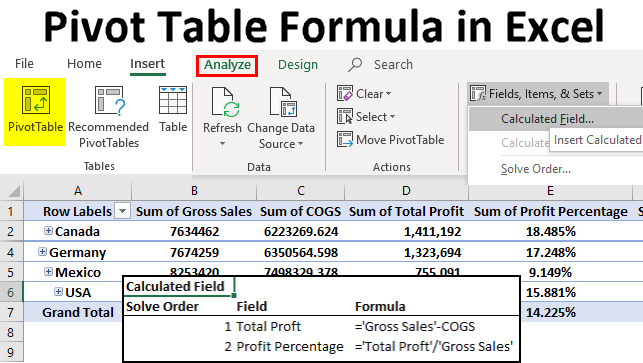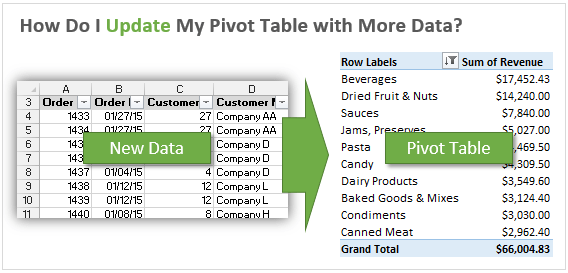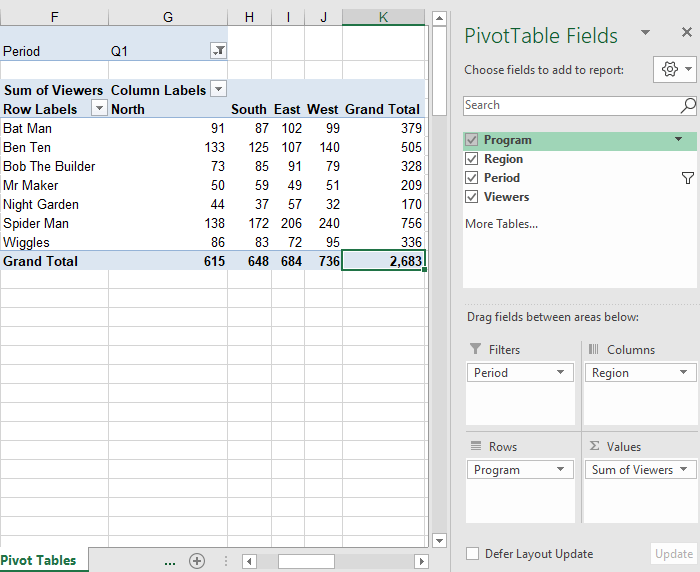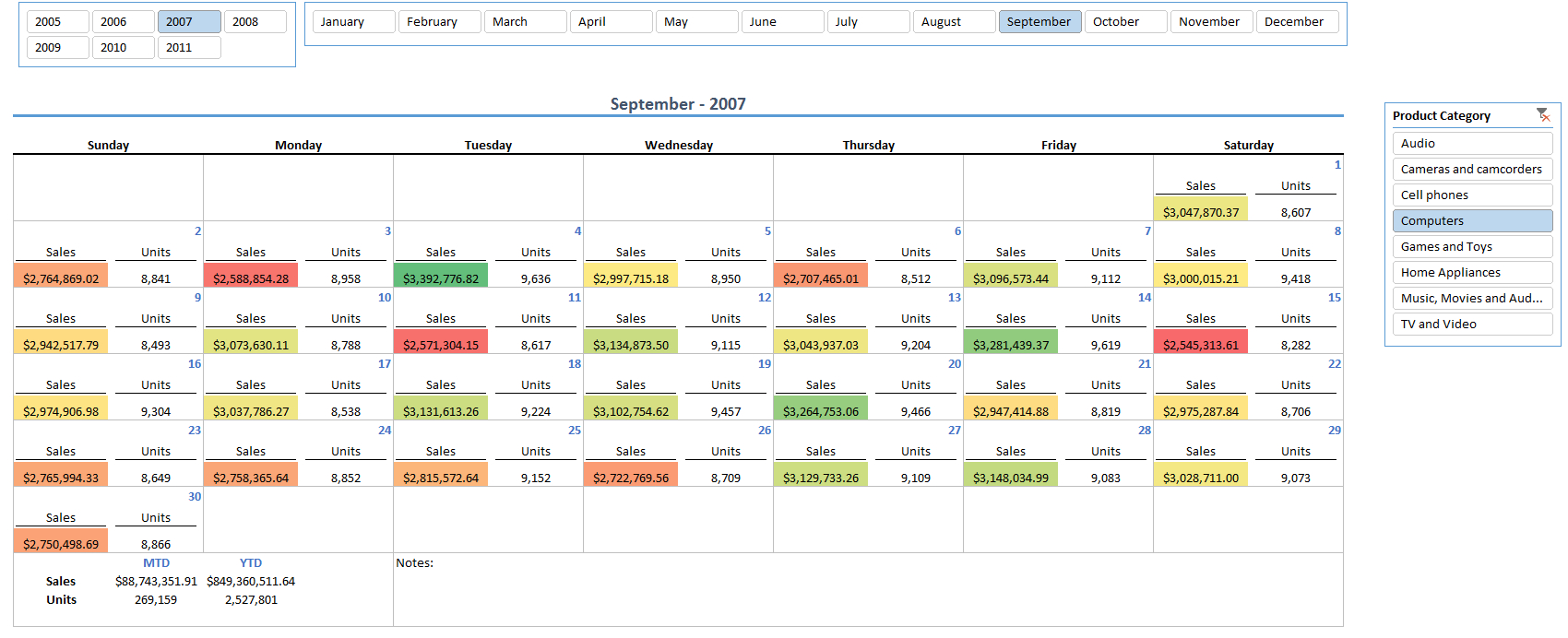

- Update pivot tables in excel how to#
- Update pivot tables in excel update#
- Update pivot tables in excel manual#
While Auto Refresh is disabled, do use the Power Pivot window (the Manage button on the left of the Power Pivot tab) and do use the measures grid.
Update pivot tables in excel update#
This could take some time if the model is complex, however this update was saved for the end of your batch of model changes. When you are done, right click the PivotTable again and choose Enable Auto Refresh:īehind the scenes when you Enable Auto Refresh, it will trigger a refresh to PivotTables to update the field list and data in them. Then make your batch of changes in Power Pivot.
Update pivot tables in excel manual#
Starting with release 0.8.4, this feature also disables DAX query tables also known as linkback tables and sets the calculation mode to manual to disable refresh of all formulas, primarily CUBEVALUE type formulas that connect to Power Pivot. This feature disables auto refresh on all PivotTables connected to that Power Pivot model (until you re-enable refresh). To avoid this delay after each Power Pivot change, right click on a PivotTable connected to Power Pivot (the built-in Excel Data Model) and choose Disable Auto Refresh: This scenario is described more fully in a blog post by Greg Galloway. This can be a huge time waster if you intend to make several Power Pivot model changes in a row. After every minor change in Power Pivot, all PivotTables refresh.

Why not make an effort to complete your next PIVOT table this way, I’m sure once you see how easy it is you will soon make sure every PIVOT table you create is dynamically linked to update automatically.Īs always please share any feedback you have in the comments section below.New to release 0.8.3 is a feature to help with heavy Power Pivot users in Excel 2013. I’m sure that will be of use to many of you out there as PIVOT tables are commonly used in Excel dashboards and reporting. If the data expands to become cells A1:C28 all that is needed to update the PIVOT table is select Data then Refresh All from the menu: The PIVOT table is now set to update automatically when new data is entered. The formula for the PIVOT table data source has to change to the dynamic named range, in this example it becomes the label “MyDataset”: The data source will look something like below, specifically set to a certain range of cells.


The next step is to amend the PIVOT table to refer to the dynamic named range, if you look at a PIVOT tables data source when first created the source refers to specific cells.įirst click on the PIVOT table, and then select Options and Change Data Source from the menu: In the New Name box that appears label the range, in this example I have used the name “MyDataset” and then applied the dynamic named range formula, ensuring that the right amount of columns are included (represented by 3 at the end of the formula in this example as there are 3 columns of data): What we must do is create a dynamic named range for the dataset so the first step is to Define a name for that range by selecting Formulas, and then Define Name from the menu: The basics are we define a name for our dataset that covers the entire range of data, and then expands as your data expands.Ĭells A1 to C19 contains the raw data, which in turn feeds the PIVOT table starting in cell E1. You can read and learn more about dynamic named ranges in one of my other posts here. The first step is to create a dynamic named range for your dataset.
Update pivot tables in excel how to#
How to make sure your PIVOT table updates the range automatically The way around this problem is to create your PIVOT table and set it up so that it will update the data range automatically. This leads to inefficiencies and more importantly it creates potential for errors when an analyst forgets to update one or more of the PIVOT tables. One of the dangers of creating an Excel dashboard or report with many PIVOT tables is that if you are not careful you can end up with something that takes an eternity to update every refresh as you will have to redo all the data ranges for every PIVOT table, ensuring it takes the new data into account. PIVOT tables in Excel are common-place but not many analysts or Excel users create them so the PIVOT Table updates automatically to new data, learn how with this short guide that will save you time and impress your colleagues…Įxcel PIVOT tables are a powerful tool for summarising raw data into more meaningful tables, reports and charts and due to these benefits you will find them in many Excel reports and dashboards.Īs most reporting is dynamic it tends to get refreshed on some frequency, be it daily, weekly, monthly.


 0 kommentar(er)
0 kommentar(er)
